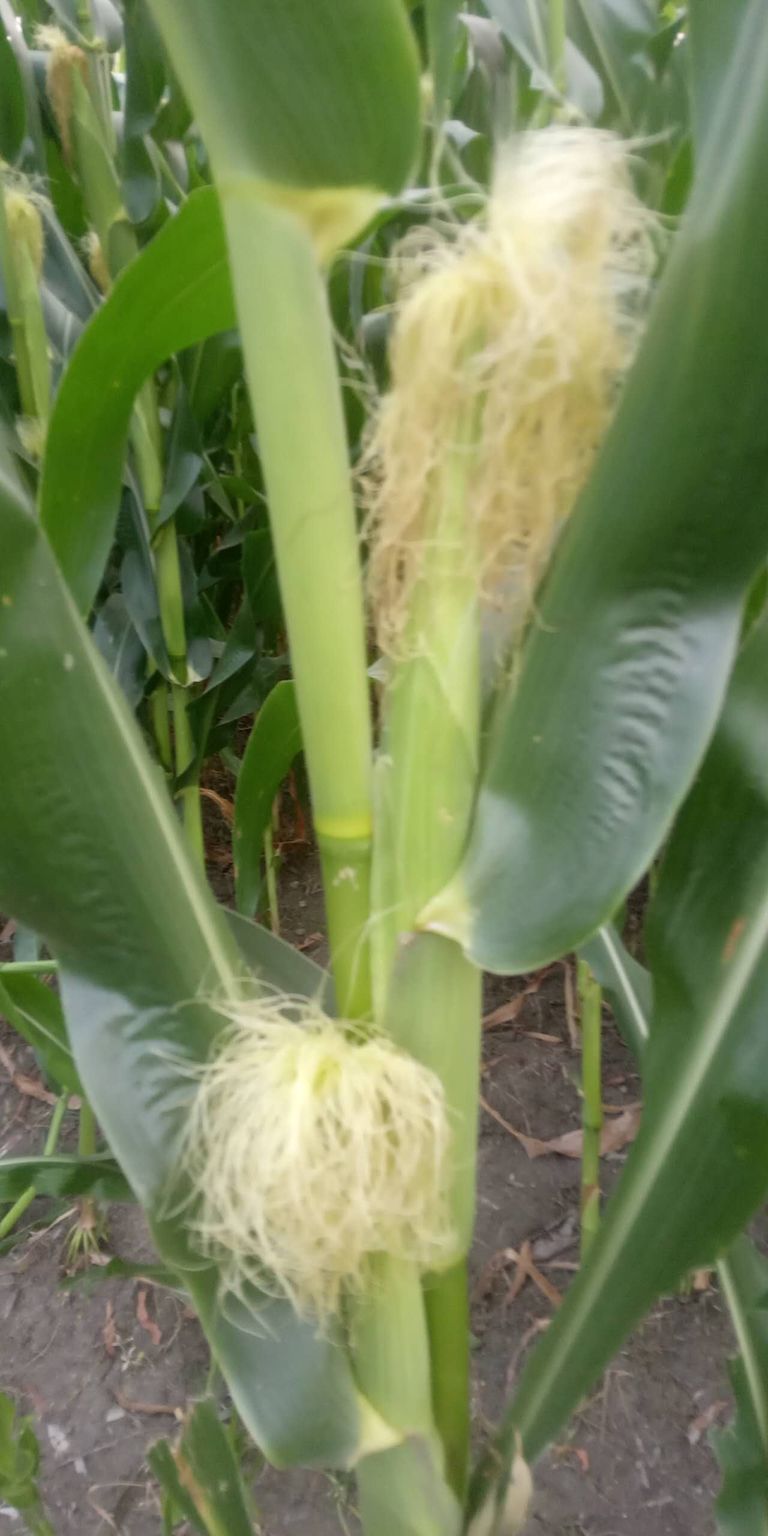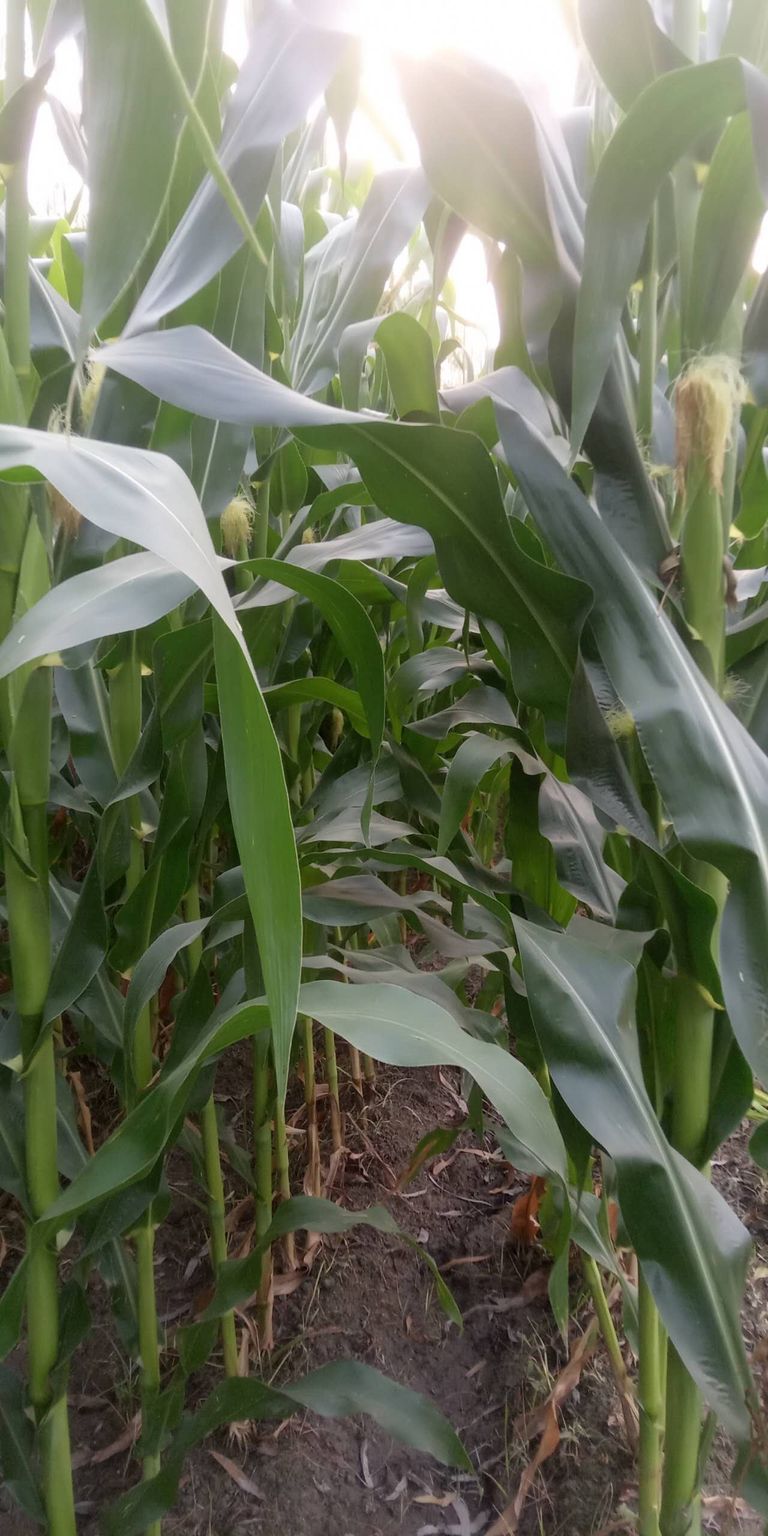Maize (scientific name Zea mays) is a type of food crop. The original origin of this crop is Mesoamerica.[1][2] It spread to other parts of the world after Europeans entered the Americas.( )
)
nutritional value
Maize is more nutritious than rice and wheat. It contains about 11% non-vegetarian content. Meat contains more essential amino acids, tryptophan and lysine. Besides, yellow colored corn kernels contain about 90 mg of carotene or vitamin "A" per 100 grams.
( )
)
use
Maize kernels are used as human food and maize stalks and green leaves are used as high quality cattle fodder. It is also important as poultry and fish feed. About 2 lakh 70 thousand tons of corn grains are required annually to meet the demand of animals, chicken farms and fish. Sandy loam and loam soils are suitable for maize cultivation. Care should be taken that water does not accumulate on the ground. Maize is also grown in jumchas.
( )
)
Maize field, Patgram, Lalmonirhat, Bangladesh
Manure application method
At the last stage of land preparation, one-third of the permitted urea and 10-15 kg of zinc sulphate, 5-7 kg of boron fertilizer and 5 ton of cow dung fertilizer per hectare give good yield. All other urea fertilizers should be sprinkled on the land. Remaining urea should be applied in 2 equal installments. The first installment should be applied after 25-30 days of seed germination and the second installment after 40-50 days of seed germination. Excess seedlings should be removed from the land within 30 days of germination. The land should be kept weed free until the seedlings are one month old.
Irrigation and weed management
Irrigation during rabi season is essential to obtain the expected yield of high yielding varieties of maize. Invented varieties can be given 3-4 irrigations as follows.
First irrigation: 15-20 days after sowing (4-6 leaf stage)
Second irrigation : 30-35 days after sowing (8-12 leaf stage)
Third irrigation: 60-70 days after sowing (emerging stage)
Fourth irrigation: 85-95 days after sowing (pre-set stage)
Care should be taken to prevent water logging in the land during the time of sprouting and sowing of corn. If weeds appear in the land, they should be suppressed with nirani. If the cutworm is attacked in the seedling stage of corn, it should be killed by hand.
( )
)
Disease management
Suppression of maize seed rot and seedling diseases
The number of maize plants in the field is usually reduced due to seed rot and seedling loss. A variety of seed and soil borne fungi such as Pythium, Rhizoctonia, Fusarium, Penicillium etc. cause seeding, seedling blight, disease and root rot. If the sap content of the soil is high and the soil temperature is low, it takes a long time for the seedlings of the sown seeds to grow. As a result, the level of fungal attack increases during this time.
( )
)
remedy
Healthy, vigorous and blemish-free seeds and corn seed rot resistant spectrum Omohar varieties should be used.
Well prepared land should be sown in moderate moisture and temperature (more than 13 C).
Seed treatment with Thiram or Vitavex (0.25%) at the rate of 2.5-3.0 g per kg of seed greatly reduces the attack of maize seed rot.
Suppression of maize leaf blight disease
Helminthosporium tursicum and Helminthosporium maydis cause this disease. The first fungus causes more leaf blight of maize in the country. Plants infected with Helminthosporium tarscum develop elongated gray spots on the lower leaves. Later it spreads to the upper part of the tree. If the prevalence of the disease is high, the leaves dry early and the plant dies. The germs of this disease survive in the affected part of the plant for many days. The spores or conidia of the germ can spread far to healthy plants with the help of wind. If the air humidity is high and 18-27 degrees C. The attack of this disease increases with temperature.
( )
)
remedy
Disease resistant varieties (Mohar) should be cultivated.
Tilt 250 EC (0.04%) should be sprayed on affected crops 2-3 times after 15 days.
Infected plants should be removed from the land or burned after harvesting the corn.
harvest
( )
)
In harvesting corn for grain, Mocha is ready to harvest when it has a bright straw color and the leaves are slightly yellow. In this condition, black spots will be seen at the base of the seeds spread from Mocha. Maize can be harvested when the cob is 75-80% mature. As seeds, large and nutritious seeds should be collected from the middle part of Mocha.
Upvoted. Thank You for sending some of your rewards to @null. Read my last posts to make sure that BLURT burning is profitable for you. Before using this bot please make sure your account has at least 100 BP. Get more BLURT:
@ mariuszkarowski/how-to-get-automatic-upvote-from-my-accounts@ blurtbooster/blurt-booster-introduction-rules-and-guidelines-1699999662965@ nalexadre/blurt-nexus-creating-an-affiliate-account-1700008765859@ kryptodenno - win BLURT POWER delegationNote: This bot will not vote on AI-generated content